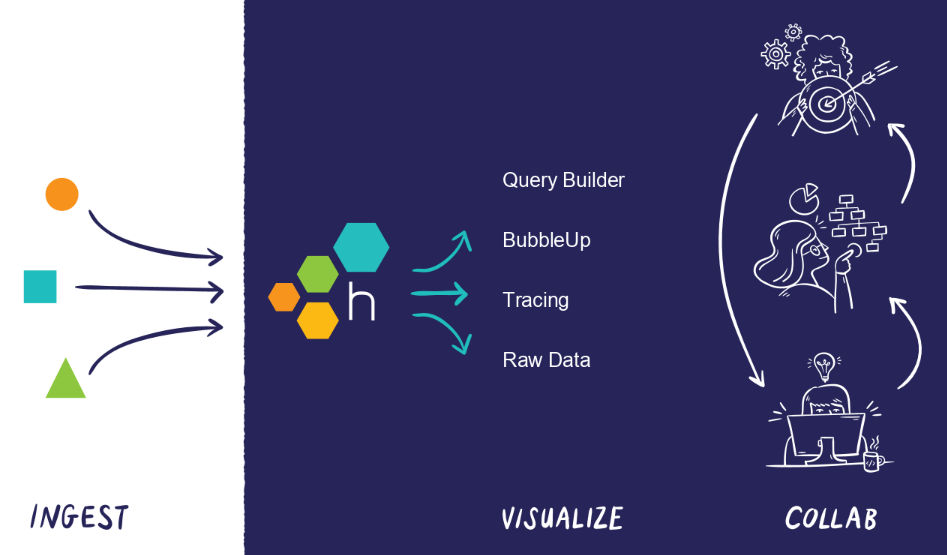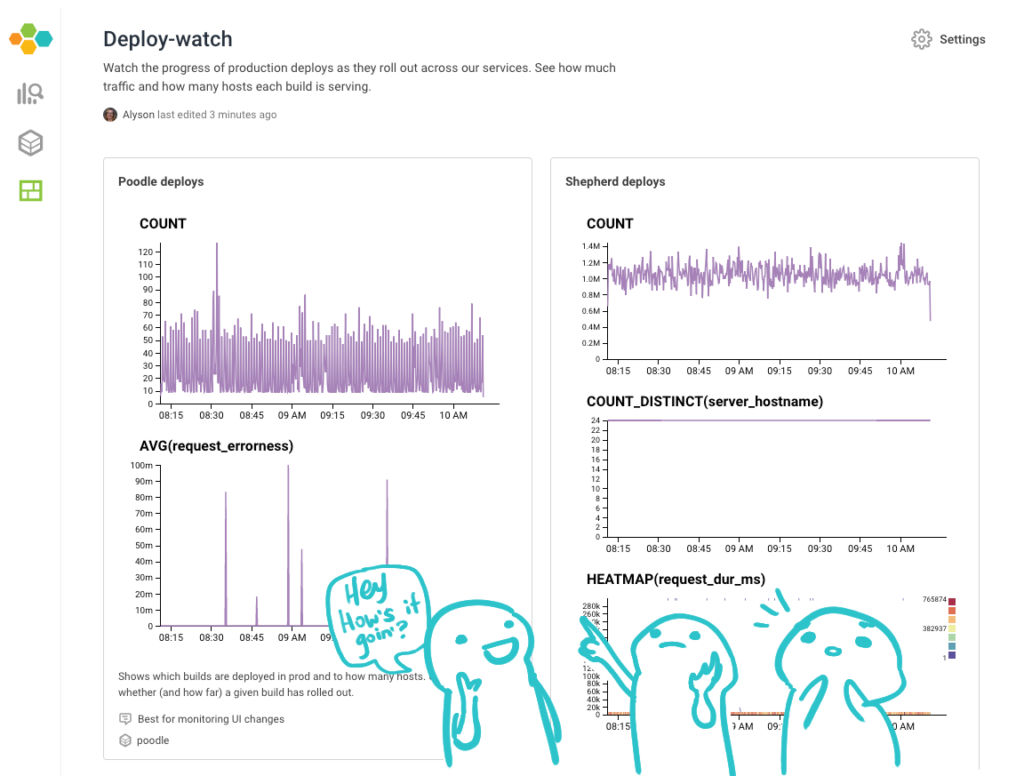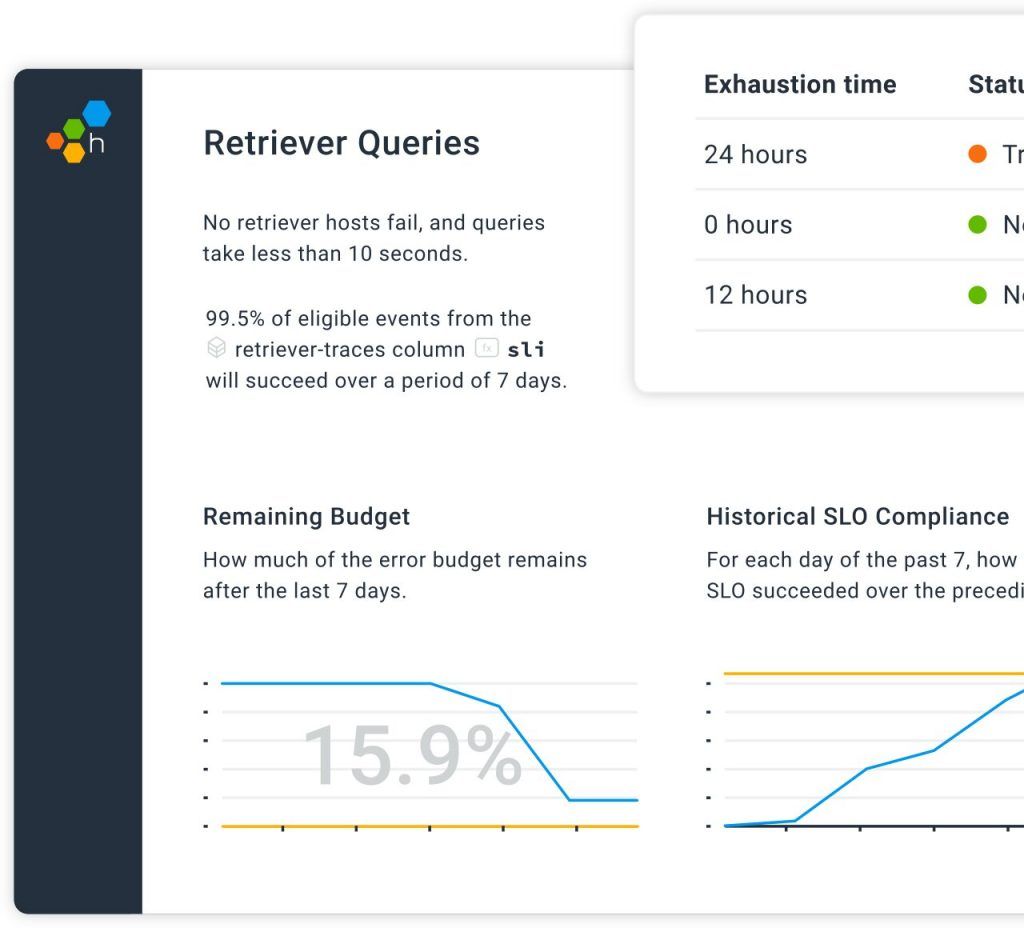There are a very few companies that have managed to create a category single-handedly. There’s Salesforce, which brought the CRM capabilities to the cloud, or there’s Drift, which defined the term conversational marketing. When it comes to DevOps, such category-defining startups are rarer. Yet, Honeycomb has been able to achieve that in less than five years of existence. The company popularized the term observability to help software developers find how the software is working in production. So, we were excited to talk to Christine Yen, Honeycomb’s co-founder and CEO about her journey, the company’s evolution, what they’re working on for the future, and more.
PS: The interview has been edited for the sake of brevity.

Table of Contents
1. Before we talk about Honeycomb itself, what was your journey into world of SaaS?
I have been a software engineer by training. And I started out working at a couple of consumer tech startups. For example, things that helped individuals connect to others, to share rides, or share knowledge. I got to a point where I struggled with how fickle consumers are. And I was really drawn towards problems that developers have. Being a developer myself, I wanted to see what it feels like to build developer tools. And that’s when I jumped over to B2B SaaS, i.e. tools that don’t just help people have fun or leisure, but instead, help them do their jobs better. And that’s really the path that led me to Honeycomb. Well, I really love building things for builders. I love building tools that help people whose problems I deeply understand and empathize with.
2. What gaps did you see in the market that led you to launch Honeycomb?
I met my co-founder at a company called Parse that got bought by Facebook. It was in 2013, and both of us were on different parts of the engineering team. And we were supporting this platform that was growing increasingly complicated, and was getting more users. And it was becoming more of an effort for the engineering team to ensure that our customers have a good experience, and the platform was stable, fast, and we understood all the dark corners that it has. We were using what we thought were the best tools at the time. A logging tool and monitoring tool to try and understand our software. But the walls that we ran into were that the tools either weren’t fast enough or weren’t flexible enough for us to quickly answer a scenario where I have got a 100,000 customers, and one of them is complaining today. What is it that they are seeing? Being able to see the software from a single user’s perspective, maybe wasn’t that important in a consumer world when you have a million consumers and they’re the same. But from our perspective, as a B2B SaaS, as someone whose business was relying on us and our users, in turn, having a bad experience, we cared a lot about trying to make sure that the experience was good. The aim was to ensure that our platform was reliable for all the users.
We realized that we’re ultimately exposed to a set of trade-offs that a tool could make that would allow us to be able to look through our data exhaust. In other words, a telemetry that tries to figure out what the software was doing at the time. And we thought that there should be a better way to understand what your software is doing in production with real users. And the trends that are driving such shifts are already in place… they are microservices and containers and things like Kubernetes. And all these trends that are making software in production today more complex, and hard to understand, also allow for developers to be faster. That means, a similar change is required in the tools that we use to understand that software well.
3. Can you give us an analogy as to what role Honeycomb plays for people who aren’t programmers / understand DevOps?

Have you ever used the software Mint? It’s a useful budgeting app because you can send it all your credit card bills and bank statements. Then, you can come in and say, where did I spend my money this month. Let’s take an example: you can find that I spent more money on restaurants (before COVID, of course). You can also analyze that I went to this restaurant two or three times. Wait, but I didn’t. Maybe that’s a mistake. I should call them up. In short, the app lets you start with high-level questions, and drill down to explore further.
If you take that kind of exploration, but pretend that you are a Capital One or Chase. That means, you have so much data that a human can’t just look through it any more or make sense of it. Now, you need tools that very quickly and very flexibly let you choose a part and try to find patterns. That is kind of what Honeycomb allows you to do. In the software world, I mentioned data exhaust that our software puts out. We’re in a world where a software is used by so many people that no human can just watch log lines. You can’t just look at that and see what’s happening. You have to visualize, you have to look at data over time, you have to try to find trends and filter by something and zoom in to a picture to figure out whether certain customers are having that kind of experience, why? When did it start, and under what conditions does that that happen? This will let you identify and fix the problem easily.
4. Could you tell us about how Honeycomb has evolved since its inception in 2016?
It has been a journey. In 2016, we were brand new, and just learning to talk about Honeycomb. And at that time, the incumbents were in a few different buckets. There was a logging tools bucket such as Sumo Logic, there were monitoring tools which includes Datadog and Grafana of the world. And then there’s APM like New Relic and AppDynamics. And we realized that we don’t fit cleanly into any of these buckets. We’re trying to describe a new way of doing things. So instead of using any of those terms, we realized that this new world that we’re trying to do aligns much more with a concept of observability. This is a term that’s used in mechanical engineering and physical engineering, and actually works very well for what we aspire to do. It basically means understanding a system based on its inputs and outputs. And using that to build a mental model to know what the system is doing. That’s telemetry, and that’s what you do when you have a software in production, and trying to figure out why it did something.
Observability means understanding a system based on its inputs and outputs.
So, in 2016, we began introducing the term observability and began to explain to the industry about observability. We highlighted the fact that observability is not monitoring, and that monitoring isn’t useless, but it only covers a part of what an engineering team might care about, or it only offers some abilities that are necessary. Whereas observability is what is necessary for this less predictable, more chaotic software. To give you an idea of how that went, in 2016, my co-founder would go to a number of conferences speaking about observability. In 2017, I remember she gave a talk that was titled ‘Monitoring: a postmortem’. It was very polarizing, and a lot of folks were very upset that she said that it’s dead. But she also introduced the term observability on stage, and she got a lot of heads nodding. In 2018, we went back to the same conference and there were about 6 or 7 talks that had observability in the title. Worth noting that this was a monitoring conference. And everyone was talking about observability, and trying to define what it means. In 2019, they changed the tagline of that conference to be not just a Monitoring Conference but a ‘Monitoring and Observability conference’. Well, it’s unusual to be building a product that is able to have that level of conceptual change in the industry. And that’s what has been so inspiring to work on Honeycomb – to really allow practitioners to reconsider whether what I’m doing is aligned with the old world, or am I looking ahead and building for the future? Am I thinking about observability? And is the team as effective as it could be?
Related read: SaaS companies that got the funding
Today, we of course have a product. We have been gaining customers. We also announced a Series B round earlier this year. So, we have all the markers of that success. But the thing that I take the most pride in is how much care we’ve put into education, and really trying to make a whole industry matter, rather than just selling our products.
5. Could you share how many customers do you have now? And what kind of industries are using Honeycomb the most?
We have hundreds of customers. We have both top-down sales with customers as well bottoms-up pro customers. Honeycomb is a tool where anyone can come in, start using it for free by putting on a credit card. We’ve seen quite a bit of uptake from that motion in the last couple of years.
We are industry agnostic. As more and more industries are moving online, everyone is becoming a software company. We are working with customers across industries. A trait that our customers share today is that they are forward-looking. They are trying to enable their engineering teams to ship faster, be more reliable, ensure less burnout, and more.
6. While Honeycomb pioneered the space, it does face a lot of competition now. How does Honeycomb stand out?
The most flipped answer to the question is that when we started everyone was aligned with one of those original buckets. Monitoring, logging, or APM. And they oriented their data storage around that. They sort of oriented the basics around this old world. So, despite them catching up, the biggest differentiator is that it feels like the best of all worlds. Honeycomb is a tool that’s as flexible as logging, as fast as monitoring, and as easy as an APM.
Honeycomb is a tool that’s as flexible as logging, as fast as monitoring, and as easy as an APM.
Within that technical foundation, and it may sound silly, is that we are building for teams of humans in a way that our competitors don’t. Our competitors want to show you how their data store can churn through lines of data really fast, or support uberscaling. But what we are really interested in this problem of how to help the teamwork together (apart from having all the expected software features). How do we help the newest engineer on the team quickly pick up those leads of intuition that makes the senior-most engineer on the team so effective? How do we bring everyone up to the level of the best debugger? How do we make it so that an ops engineer can leave a paper trail when they’re exploring some database thing that a product engineer can follow? This way, one can learn how experts debug. I think there’s a lot of interesting things here that we have barely scratched the surface of.

At the core, when engineering leaders look for a tool, they’re looking for their teams to be more effective and the choice of tools is only a part of that. We are really interested in having functionality in our tools and talking about practices that really allow our customers to adopt new practices, to supports the natural phenomenon of looking the shoulder that already happens with humans. And I think it leads to a number of product choices where we really allowed a human to be what they do the best. And then allow the machines to do with the machines are good at, which is run all sorts of the statistical analysis.
7. Could you a shed a light on Honeycomb’s marketing strategy?
I mentioned investing in education and in the digital community. Honestly, I think even if we change our marketing strategy, it’d be hard for us to stop doing this. We publish a lot of blog posts talking about how we, as the engineering industry, perform better. So right now, I’m wearing a shirt that ‘Friday deploys, no sweat’. Because there was a big debate about two years ago (and there still is). Is it safe for the engineering team to deploy on Fridays? And my co-founder was right there in the middle of the debates. She was saying if it’s not safe for your team to plan the deployment on Fridays, the solution is not don’t plan Fridays… but you need to figure out what else to fix that not deploying on Friday is covering up. So, I think our engagement in these topics is something that really shows folks we know what you’re struggling with. We know these things are hard, but this is how it can be better. And because of that, I think we speak very incredibly to practitioners. We have a very generous reach here that people can use us for as long as they want. That allows someone to really play on honeycomb to use it on their personal projects or a part of their thing at work. I think that it has continued to be a really viable source of “marketing” for us. As you know, developers are naturally skeptical of traditional marketing, and I think the best way for a developer to introduce something they can try out themselves. Just saying to them “look at this cool thing, do you want to come play with it?” If you make it easy enough and useful for them, they’d definitely come to you.
8. How has the ongoing pandemic affected Honeycomb – both in terms of businesses and no of users?
When the world moves online, that means people depend on their software more. In the early days, of course, there were some slow budgets from people who were not sure what the future would bring. However, very quickly, we saw folks realizing that everything is online and that means, our software better be solid. While it’s strange to say, but from a business perspective, 2020 has been good for us. That said, there’s been a negative impact as well, and that’s the fact that everyone – whether it’s our employees or customers – is tired. On that front, we’re being impacted like everyone else. But you know, I take a certain pride in focusing on the positive impacts we’re having on our customers.
9. What’s next for Honeycomb? Any new features that you’re working on?

It’s worth noting that we actually closed our Series B round last fall. One of the main reasons for raising the round earlier than the schedule is that we really saw Covid as an opportunity for us to push the accelerator. We didn’t want to go on being defensive when we know that our competitors are all better funded and are larger. We said to ourselves we have something special here. We have some excellent customers. And so many things we want to build. So we raised the funding to invest again in our product as engineering teams. We’ve doubled our engineering team in the last three months of 2021, Our engineering team was like this would be as fast as we can go, and still ensure a good onboarding experience for new employees.. I am so excited to be able to have all these engineers help us shaping the future of our product.
And besides really hitting or stride. We have quite a few exciting project releases coming up this year. We’re running our virtual conference in June called o11ycon+hnycon. And it will be where we’ll announce at least one of these exciting features. One thing that I’m looking forward to the most is showing people that Honeycomb is not just an add-on to your suite. Honeycomb can be a center for your engineering team and can be the place that you go to understand what’s happening through software production.
10. What are your favorite SaaS products out there?
One software that I really love is Carta, and it’s awesome considering the delta between what it offers and what we’re doing before. I live in 1Password as it’s a great tool. We use Asana for managing our projects. There are a million others, but these were my favorites.






